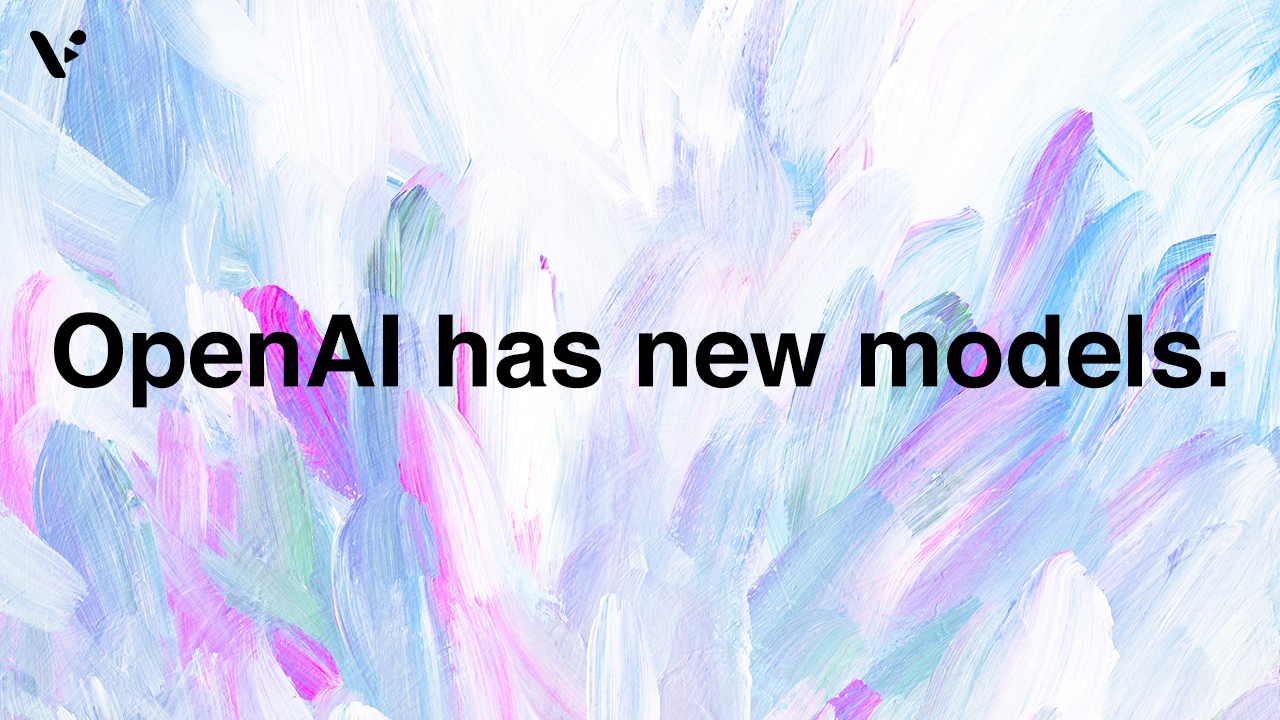If you’ve been keeping an eye on the world of AI, you know things move fast. But today marked one of those major milestones that gets the whole tech world buzzing. OpenAI just launched o3 and o4-mini. Two models that are not just smart, but seriously strategic. Think of them as your brainy co-workers who not only know the answer, but can explain it, research it, analyze the data, and brainstorm next steps.
They’re trained to reason, plan, and take action all in one go. And if you’re wondering how this affects your work, your industry, or your team’s productivity, keep reading. These models weren’t built for fun. They’re built to get things done.
o3 and o4: designed to think before the speak
The biggest shift in o3 and o4-mini? They don’t just guess a good answer and throw it at you. These models actually pause and think. OpenAI trained them to use multi-step reasoning. That means they break down your question, figure out the best way to approach it, and then walk through their logic before they respond. It’s like having a colleague who writes up a mini strategy memo before replying in a Slack thread.

This kind of reasoning makes a big difference when you’re solving real-world problems. Whether you’re debugging a tricky piece of code or analyzing market data, you want a model that doesn’t just get close, you want one that gets it right.
And the o3 model? It keeps getting better the more time you give it to think. Even when it runs at the same speed and cost as its predecessor GPT-4, o3 still wins on accuracy. That’s a big deal.
Smart tools, smarter uses
One of the most exciting upgrades with these models is their autonomous tool use. In older versions, you’d need to nudge the AI to browse the web, write code, or summarize a file. Now, o3 and o4-mini know when and how to use tools without being told.
For example, you might ask, “What are the top three emerging market trends in renewable energy for 2025?” The model could:
- Search for recent articles or reports,
- Pull and clean relevant data,
- Run a Python script to identify patterns or compare with past trends,
- Generate a graph or chart to visualize the result,
- Summarize key insights in plain language.
And it’ll do all of this on its own, connecting steps like a mini project manager with access to an entire research team.

This kind of reasoning and execution combo is what OpenAI calls a move toward an “agentic” ChatGPT. Basically, these models don’t just assist, they operate.
o3 and o4 see, understand, and incorporate images
o3 and o4-mini are also multimodal, which means they’re just as good with images as they are with words. You can upload a chart, screenshot, product photo—even a whiteboard picture—and they’ll factor that visual content directly into their thinking.
Let’s say you’re working on a product launch and you snap a photo of a brainstorm on a whiteboard. The model can analyze the notes, infer the theme, highlight key ideas, and even cross-reference what’s missing based on market data.
They don’t just caption images. They reason with them. They can zoom in, rotate, crop, and pick out relevant visual details to support your goals. It’s next-level.
More context than ever
Here’s another massive upgrade: context window size. o3 and o4-mini can handle up to 200,000 tokens. That’s hundreds of pages of text. More than five novels worth.
This gives them the ability to digest, reference, and build on large volumes of information in a single session. Whether you’re reviewing long legal contracts, analyzing multi-year financial reports, or scanning massive code repositories, these models won’t miss a beat.
They also hold onto the flow of a conversation much better, making them ideal for customer service, collaborative brainstorming, or technical support.
o3 vs. o4-mini: What’s the difference?
While both models are powerful, OpenAI released two versions to fit different needs. Think of o3 as the flagship powerhouse and o4-mini as the lean, fast performer.
| Feature | o3 | o4-mini |
|---|---|---|
| Power | Maximum reasoning, ideal for complex tasks | Efficient and optimized for everyday performance |
| Speed | Slower but more thorough | Very fast, great for real-time apps |
| Cost | ~$10 input / $40 output per million tokens | ~$1.10 input / $4.40 output per million tokens |
| Use Case | Deep analysis, research, ideation, coding | Customer support, dev tools, quick analytics |
o4-mini might be smaller, but don’t underestimate it. On many benchmarks, it comes within striking distance of o3. For example, on some coding tests, o4-mini scored 68.1%, compared to o3’s 69.1%. That’s a tiny difference, especially considering the big savings in compute cost.
What It Means for Your Business
This is where things get practical. Businesses across industries can now tap into high-powered AI without needing a huge budget or tech team. Here’s how we imagine teams could use these models:
- Marketing: A content strategist at a growing startup uses o4-mini to generate ten variations of a product tagline, complete with suggestions for ad copy and video scripts. The team then refines and selects the best ideas manually. It speeds up brainstorming, but human creativity still makes the final call.
- Sales: A SaaS sales team feeds anonymized CRM data into o3 to detect patterns in customer objections. The model groups common themes and recommends talking points. It’s not perfect, but it helps junior reps prep faster and gives the team a shared playbook to iterate on.
- Customer Support: A support rep uploads screenshots of an error message a user received. The model suggests possible causes and links to relevant documentation. It’s helpful for triage, but a human still reviews and confirms before replying to the customer.
- Product Teams: A product manager uses o3 to summarize a 50-page requirement doc and flag inconsistencies in spec alignment. It catches some useful things—but misses a few. It’s a second set of eyes, not a final authority.
Sources
OpenAI, “Introducing OpenAI o3 and o4-mini,” OpenAI Blog
Maxwell Zeff, “OpenAI launches a pair of AI reasoning models, o3 and o4-mini,” TechCrunch
Sabrina Ortiz, “OpenAI just dropped new o3 and o4-mini reasoning AI models – and a surprise agent,” ZDNet (Apr 16, 2025)zdnet.comzdnet.com.
Additional reporting by CNBC and The Information

